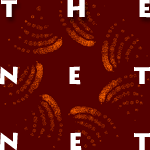THE MEDIA EQUATION describes research into human-media
interactions from two media researchers who go on to offer design
recommendations for media as diverse as word-processor software and film.
The authors took a number of well-replicated psychology experiments in
which human interactions were studied, and they conducted these
experiments using humans interacting with various media -- from simple
text interfaces to video clips. The experiments range from measuring
emotional response to mediated information to measuring human ability to
consider a computer part of a "team." They discovered that people's
responses to media are fundamentally social and natural. The book is
fascinating for what it tells us about human responses to media, and it
is also a highly appealing digest of social science experience in the
measurement of human interaction.
CSLI was founded in 1983 by researchers from Stanford University, SRI
International, and Xerox PARC to further research and development of
integrated theories of language, information, and computation. The
findings presented in The Media Equation grew out of CSLI
investigators Reeves and Nass's research into Social Responses to
Communication Technologies (SRCT), a multiyear research program of
experimental studies that demonstrate the ways in which users respond
socially to information technologies. The Media Equation is
divided into five sections -- treating manners, personality, emotion,
social roles, and form -- and every section reflects the same
methodology: Social science models were used to ask questions about
humans interacting with media.
Reeves and Nass demonstrate that many unquestioned notions about media
are simply false. Among their more eye-catching conclusions is that even
people who state that they do not consider a PC a social actor do, in
fact, respond to PCs as if they are social actors. The authors' study
subjects represented many groups and many ages and included sophisticated
users of computers and other media. The Media Equation shows that
politeness to a computer or perception of a television's expertise are
not marks of inexperience or ignorance, but simple reflexive responses.
People respond to media the way they respond to people because it is
simpler to respond naturally. Moreover, only minimal cues are enough to
elicit these social responses, which mediate perceptions as diverse as
personality of the medium and production quality.
The authors are aware of how deeply counterintuitive some of their
results are to sophisticated computer users, and while they are quick to
point out that even sophisticated users had fundamentally social
responses to media, they offer little detail about some of the logical
extensions of that. Reeves and Nass suggest, for example, that cartoon
characters that appear on a computer screen will be palatable vehicles
for help and friendly error messages. The key is probably
configurability; novice users will find them palatable, and sophisticated
users can turn them off.
People don't just use media as tools, they also react to them socially,
unless they are really proficient, in which case they want them at least
to act like tools. This potential wrinkle in their thesis is not
amplified, although ultimately it may not even be relevant. Reeves and
Nass have shown that even people who would likely dismiss cartoon help
characters as silly toys can still have fundamentally social responses to
computers -- sophistication doesn't disengage the brain's tendency to do
the simple, social thing even if it emphasizes different parts of the
computer-using experience -- and their interface suggestions are geared
for the most part toward commercial products or other applications that
expect a very large user base.
The Media Equation's implications range widely, from media design
to management principles. Reeves and Nass are interested in asking their
questions about human responses to media, but the descriptions of the
models for the experiments themselves are interesting, nicely described,
and extensively referenced. The social science experiments adapted for
this study are certainly available, but it would be difficult to
construct a more appealing tour of some of these very basic conclusions
about human behavior. Reeves and Nass also offer a fine example of the
strength of interdisciplinary investigation, setting this engaging stage
and presenting their conclusions about media with enviable economy,
clarity, and charm.
Reeves and Nass's conclusions are summarized at the CLSI's SRCT
page.
See also the Center for the
Study of Language and Information (CSLI) web site



